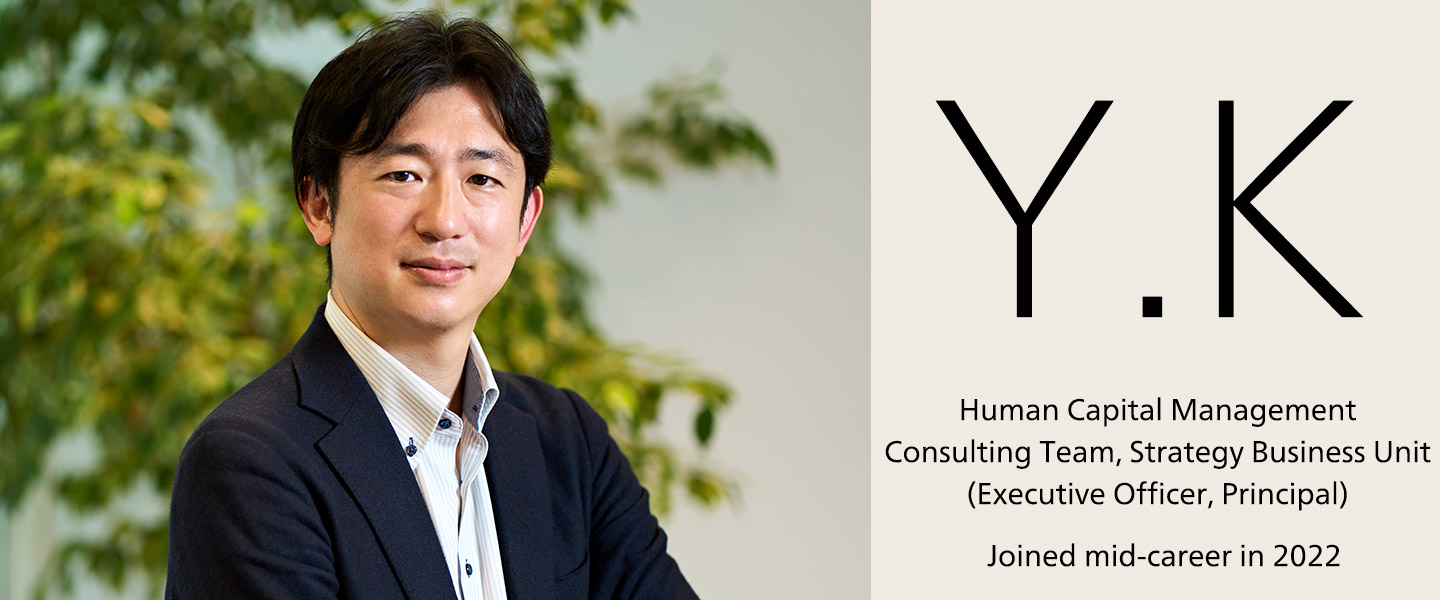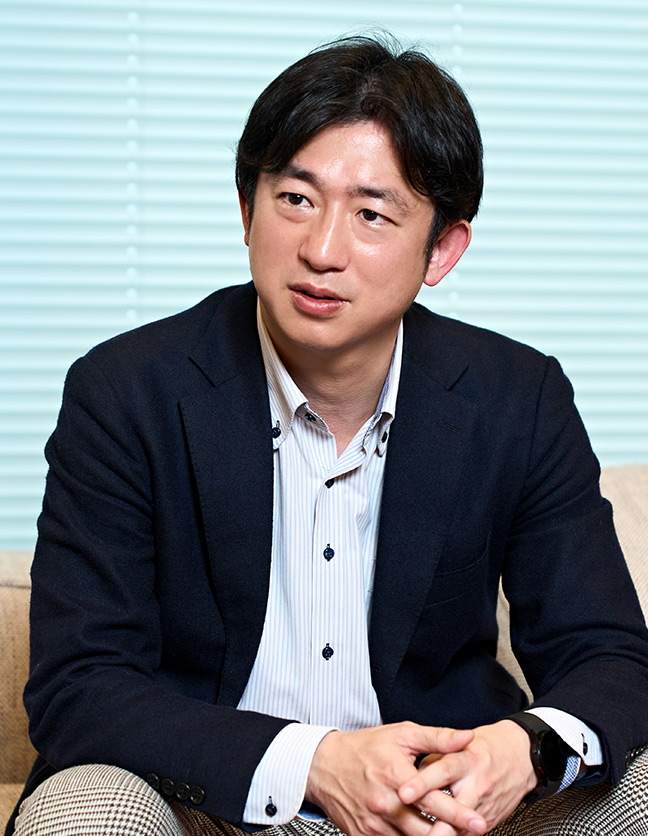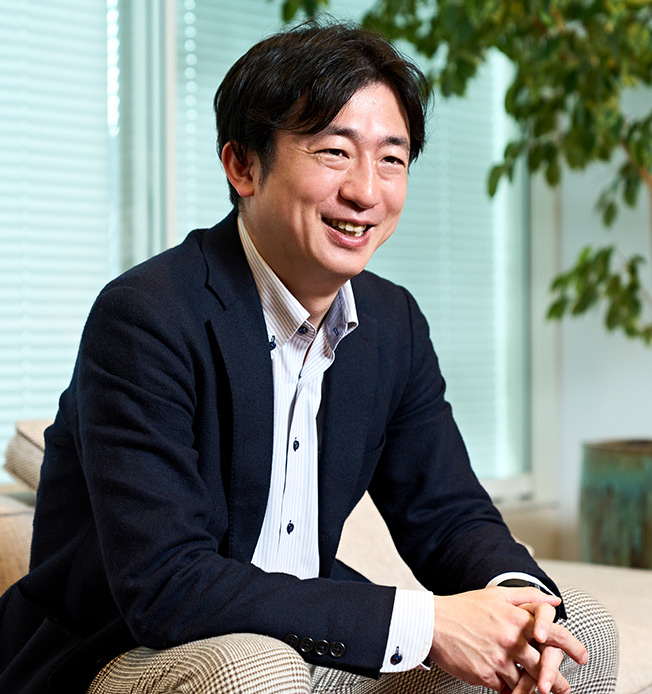Supporting an integrated approach to human capital management
We will introduce a principal who has abundant knowledge and experience in carrying out human capital management, the new management approach that is attracting interest, and who is strongly committed to corporate transformation and taking on challenges.
Supporting an integrated approach to human capital management

Experiences in ABeam ~ Impressive Project~
In HR, selection and concentration are essential to ensuring that HR policies are closely aligned with business strategies

From FY2023 onward, the Financial Services Agency (FSA) will require disclosure of strategies, as well as indicators and targets regarding "human capital investment (management)" from approximately 4,000 large companies that issue securities reports. Human capital management is a concept in which human resources are regarded as a form of capital, and which aims to maximize their value to increase medium- to long-term corporate value.
I have been involved in HR-related consulting for more than 20 years, and I have always felt a bit uneasy about the distance between HR and management. This is because I sense that issues addressed by HR departments, and their overall approaches to management, are often insufficiently geared toward business strategies and management issues despite being intimately intertwined with them.
I am convinced that the human capital management movement will transform that in a big way. Let me explain the reason for this using an example of a project I am involved in at ABeam for a well-known major manufacturer.
The company had inherited the intentions of its founder, and employees concurred on the significance of the company's existence (its Purpose), which is why the company was delivering products to the world that earned the trust of consumers. However, as they entered their second founding period, they came to realize that they needed to strengthen their human resources more, and that to do so, they needed selectivity and focus in their HR policies. They also needed to improve their level of disclosure in response to the mandatory disclosure of human capital.
In this project, we are therefore setting priorities in terms of human resources (materialities), examining the talent portfolio based on that, and then selecting and concentrating on human resources measures and formulating measures to communicate externally (output measures), including the Integrated Report.
Specifically, the theme that remained poorly defined with a lack of execution scenarios was that of securing the human resources the company wants, and developing their human resources that have potential. They noted that they wanted IT and DX personnel, but there was no clarity on definite specifications (required capabilities) as they relate to business strategies, nor was there a clear program to identify and nurture personnel with potential. It was impossible to contribute to genuine realization of their business strategy under these circumstances.
We worked with the client to clarify a series of definitions and issues, to spread enthusiasm for reform within the company, involving not only the human resources department but also the corporate planning department, and to develop a strategy for communicating this to the world with the public relations department.
Through this initiative, we were able to get hold of a concrete approach to increasing the capital strength of people as an intangible asset, led by the Chief Human Resource Officer (CHRO). We were thus able to show the way forward for human capital management to take shape with a strong link to business strategy.
Why ABeam ?
ABeam was quick to perceive the importance of human capital management consulting
Upon graduating, I joined a foreign consulting firm, where I was in charge of consulting for the HR department of a client. After that, I moved to a PR firm and experienced the launch of a number of new businesses. I then returned to my former foreign consulting firm with the mission of rebuilding the HR consulting division, which had collapsed due to the "Lehman Shock" financial crisis.
My experience with new business operations made me keenly perceptive of the fact that the HR department's efforts lacked a deep linkage to the firm's business strategy. People are a resource critical to the success of a business, and yet in most cases, relevance to business strategy is left vague when defining requirements for training and hiring people. It's as though they say, "Here's the kind of person we want, but we'll leave the specifics up to the personnel department."
This indicates that scenarios for optimizing the business strategy with human resource specifications were unclear, and that within the overall HR picture, there was no well-developed composition of talent portfolios designed to help accomplish the business strategy. In other words, the HR department has not managed to verify its own measures, nor has it been able to select and focus on HR measures. This also serves to illustrate how the CHROs at many companies have fallen short of fulfilling the CHRO role.
As human capital management began to attract interest amid the trend toward emphasizing the value of a company's intangible assets, a new need for human capital management consulting emerged. It was ABeam that first sensed this and understood its significance. This and various other eventualities led to my decision to join the company.
After joining ABeam, I used my previous experience to establish the Human Capital Management Consulting Team as one of the strategic consulting divisions. The team also acts as a self-transformation agent for ABeam's own human capital management.
Future ~Growth Story~
Weekly Study Day
Become a leader who creates a team with a wide range of expertise and abundant human qualities

I believe that ABeam is the only company that has a framework for human resource reform that realizes true human capital management linked to business strategy, and also has specific target indicators that clearly specify what helps enhance corporate value. We can present a scenario that combines initiatives and results, specifying, for instance: "Within three years, our talent portfolio will look like this and create this much corporate value."
However, to do so, there are naturally many points on which we need to play catch-up in order to improve the coordination with business operations. Consultants must also have in-depth knowledge and understanding of business strategy as well as HR policies.
In management, I require my team members to adopt seven attitudes toward their work. These include, for example, "Be an enabler," meaning that the consulting must be feasible, and "Provide consulting with a sense of touch," meaning that the client should be able to feel a tangible sense that it can be accomplished. Within this, we also have designations like, "3 days of operation, 1 day of study, and 3 days off per week." Each evening, we set aside "Study Time" where staff members freely discuss a specific topic, while one day a week is designated as a "Study Day" for learning. The theme of study is free. As human capital management consultants who must guard against becoming what are called "expert ignoramuses," I believe that we can work side-by-side with our clients only if we have broad and deep expertise and abundant human qualities.
I will continue to take on challenges beyond various frameworks as a Real Partner offering a high value proposition, together with the members of ABeam, who have a wealth of knowledge and human qualities.


